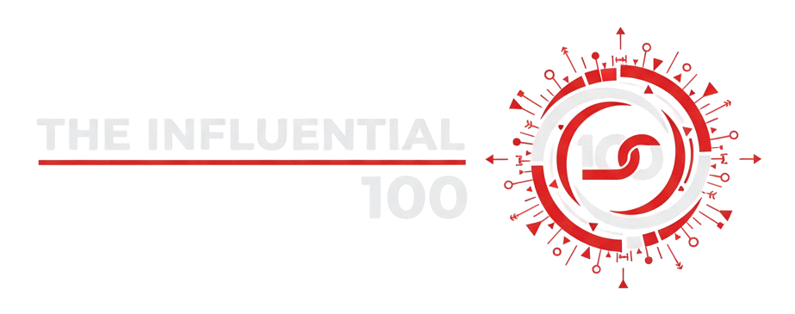Gaurav Deshmukh
Gaurav Deshmukh Senior Software Engineer and Tech Lead at Guidewire Software Top Voice The InsurTech (Insurance Technology) sector is revolutionizing the conventional insurance industry by making use of advanced technologies like artificial intelligence (AI), cloud computing, automation, and data analytics. InsurTech seeks to improve efficiency, enhance risk analysis, automate claims processing, and provide customized customer experiences. By adopting digital solutions, businesses can minimize operational expenses, identify fraud better, and deliver quicker, more transparent services. With changing customer needs, InsurTech continues to be the trendsetter, ensuring that insurance becomes more accessible, data-led, and market-sensitive. This vibrant business is changing the face of insurance by harnessing technology to address age-old issues. Gaurav Deshmukh’s interest in technology and issue-solving brought him into the InsurTech space. With backend systems and application expertise, his experience at Cigna and Guidewire acquainted him with the potential of technology in revolutionizing insurance operations. Intrigued by data-related challenges and decision-making intricacies, he found a chance to introduce simplicity and effectiveness to the sector. Today, as an InsurTech expert, he creates innovative solutions that optimize operations and enhance customer experiences. Bridging the Gap Between Technological Advancements and Leadership in Insurance With years of experience in insurance and software development, Gaurav has seen tremendous technological changes. Cloud computing, artificial intelligence (AI), and automation have revolutionized the way insurance firms work. Cloud technology has made scalability smooth, AI has transformed risk assessment and claims handling into faster and more accurate processes, and automation has automated traditionally labor-intensive processes, minimizing errors and maximizing efficiency. These developments have not only enhanced in-house processes but also made insurance more customer-centric and responsive. As a Senior Software Engineer and Tech Lead, Gaurav not only remains abreast of such technological developments but also equips his team to manage them effectively. He maintains a balance between technical superiority and leadership by ensuring ongoing learning, transparent communication, and organized problem-solving. He derives energy from addressing uncertain business issues and disassembling them into organized, actionable solutions. A h5 proponent of mentorship, he subscribes to Richard Feynman’s creed: “If you can’t explain it simply, you don’t understand it well enough.” This approach inspires him to make technical complexities simpler so that his team gets a complete understanding of the solutions they are developing and remains competitive in the ever-changing InsurTech space. The Evolution of InsurTech and the Role of Software Engineering Gaurav believes the future of InsurTech lies in No-Code/Low-Code platforms and data-driven solutions that transform insurance operations. Software engineering plays a crucial role in this transformation by developing scalable platforms that allow companies to quickly adapt to customer needs. The focus is on building systems that offer transparency, efficiency, and enhanced user experiences—resolving many of the ambiguities that have historically challenged the insurance sector. AI and automation are also transforming risk assessment and claims processing in the insurance sector. AI-driven algorithms can scan huge volumes of data, identify suspicious claims, and provide more precise risk assessments. Automation, on the contrary, accelerates labor-intensive processes that used to be time-consuming, lessening human effort and error. Through the use of these technologies, insurance firms can provide quicker and more transparent services to clients. Gaurav is proactively working towards embedding AI-powered automation to enable insurance operations to become smarter, more efficient, and user-centric. With the ongoing development of InsurTech, AI, and automation will become instrumental in determining the future of the industry, in conjunction with No-Code/Low-Code platforms that democratize innovation for insurance companies. Developing High-Performance, Scalable, and Secure Insurance Platforms: The Intersection of Technology, Compliance, and Customer Trust Insurance platforms demand great scalability, strong performance, and stringent security, given the growing customer expectations and cyberattacks. Gaurav makes sure that the software he creates is geared to meet these requirements by crafting cloud-native architectures based on microservices and containerization. With this design, components can be scaled independently, providing efficiency at different loads. Load testing and performance monitoring are also key in ensuring system stability so that it can process heavy transactions without failure. Meanwhile, security and regulatory compliance are always at the top of the agenda. As cyber threats grow, Gaurav has a multi-layered security strategy that incorporates data encryption, tight access controls, and frequent security audits. He also works closely with legal teams to ensure compliance with industry regulations. By anticipating performance and security issues, Gaurav makes insurance platforms not only scalable but also robust and compliant, protecting customer data while providing smooth digital experiences. Overcoming Challenges in Insurance Software Development and Envisioning the Future of InsurTech Gaurav has faced several challenging issues with insurance software development throughout his career. One of his most challenging projects was migrating legacy systems to a microservices architecture. The process was very labor-intensive, as unexpected complexities usually arose. His approach was to divide the migration into smaller, manageable steps, maintain open communication between teams, and have iterative progress monitoring. This systematic process enabled the team to handle unknowns efficiently and make a seamless shift to a more scalable architecture. In the future, Gaurav is most looking forward to AI-driven automation and No-Code/Low-Code platforms, which he thinks will transform the way insurance firms work. These technologies will enable companies to respond rapidly to shifting market conditions, providing more customized and streamlined services to customers. His job is to create scalable, secure platforms leveraging these technologies that propel the industry toward more efficiency and innovation. Gaurav is also interested in imparting knowledge through writing and mentoring. Through making difficult technical ideas simple, he wishes to empower the next generation of engineers to build innovative solutions for the insurance industry. Advice for Young Engineers Entering the InsurTech Space To new engineers entering the InsurTech sector, Gaurav recommends establishing a strong technical background and learning deeply about insurance processes. The sector has complicated, uncertain problems, and success lies in connecting technology to business requirements. Problem-solving, flexibility, and ongoing learning are emphasized. Mentorship is crucial—teaching others about something not only reinforces one’s knowledge but also refines communication skills. Further, keeping oneself informed about developments in AI, automation, and cloud computing will equip




